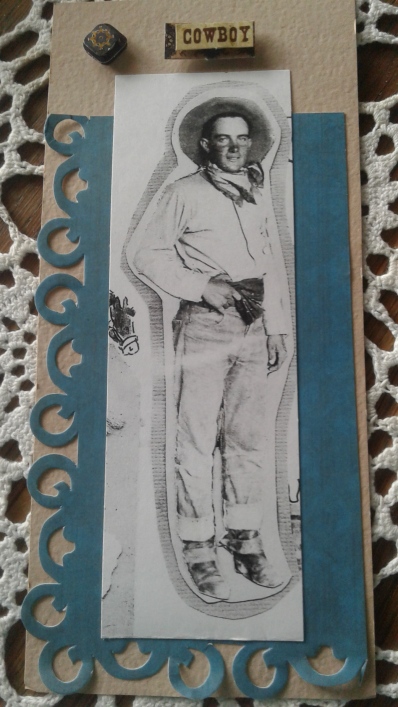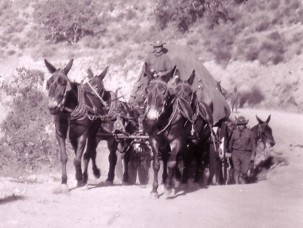
Sometimes, Kansas farm boys hear the call of wayward wind voices directing them to new horizons. At the beginning of the last century, my great uncle Edward “Jack” Ralph Boultinghouse heard those voices. He followed them to the vastness of Wyoming cattle ranches and to booming oil fields where purple mountain majesties embraced him. He has been introduced to this land when he came with his father on a hunting trip in 1916. His father returned to Kansas…Jack stayed. He became a real cowboy who could wrangle and rope. Eventually, he became a roustabout on those oil fields.
Along that journey, he joined the Wyoming National Guard. The United States was drawn into World War I in 1917 despite all of President Wilson’s actions to maintain our neutrality. Suddenly, Jack the bronco buster became Jack the wagoner. His military unit was the 116th Ammunition Train, 41st Division. He lead mules and horses that pulled wagonloads of artillery rounds to cannons in battle zones.
His unit was formed from men from Wyoming and Oregon. These men were chosen to be wagoners because of their experiences with handling horses and mules. The Brits and the French were quite happy to have these Yanks join them in the fight. World War I would be the last war to use horses and mules…the Yanks had lots of these animals to lend to the fight.
Jack and his company left for France on December 12, 1917, aboard the commercial steamer Antigone. How did it feel to be crowded on a ship with a vast ocean before him…how did he compare that ocean to his beloved Grand Tetons? Did he suffer both seasickness and homesickness?

Once in France, he was responsible for caring for his team of mules and driving a wagonload of ammunition. What did that sound like as caravans of teams moved forward through dirt and mud? How did the soldiers’ voices boom out with commands for the animals? When were the days most frightful as the distant thunder of battle filled the air? Did Jack write letters home to reassure his family that he was safe…his hometown paper carried little news of the war?
After the Armistice was signed on 11 November 1918, Jack and his unit remained in France until 24 June 1919. How did his unit spend their days after the war? Was there a somber mood or a celebratory air as they sailed home? How did he envision his future?
After his return, Jack did go back to Kansas for a brief time. Those wayward wind voices called him to return to his beloved Wyoming. Throughout the remainder of his life, he would also live in Nebraska and Colorado…working as a wildlife preserve manager and as an Army consultant for Remington Arms.

My grandmother, Isabella Mary Boultinghouse, was Jack’s little sister as he was seven years older. How she came to receive his World War I dog tags I do not know. Did he give them to her when he returned from war? How they were passed onto me I do not remember. This little aluminum disk is a precious heirloom to me…it once hugged the neck of my real cowboy and soldier Uncle Jack.